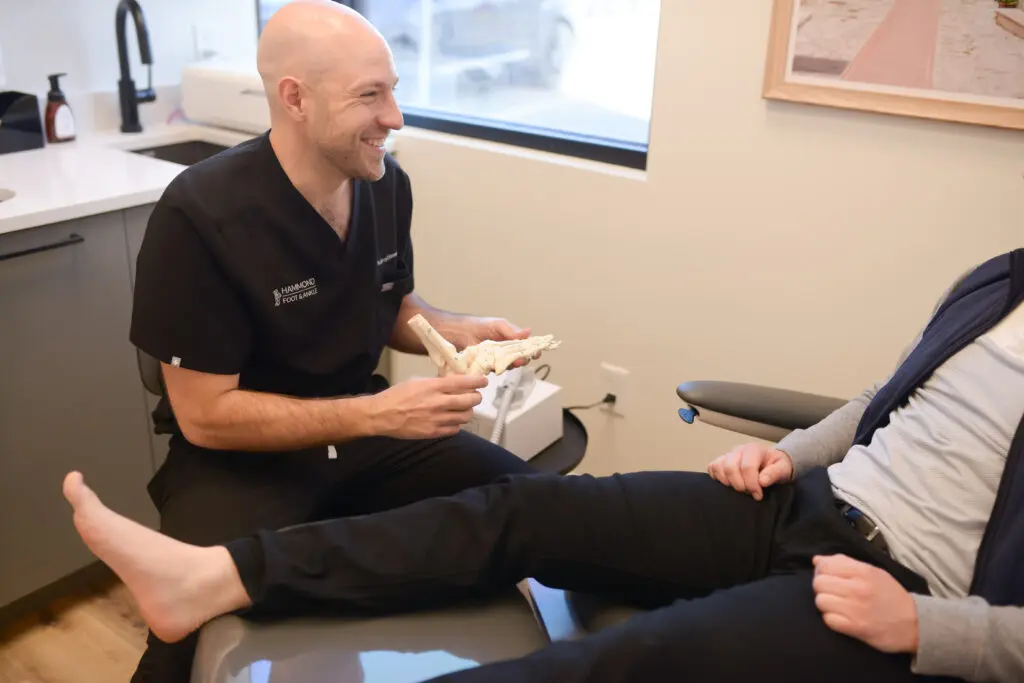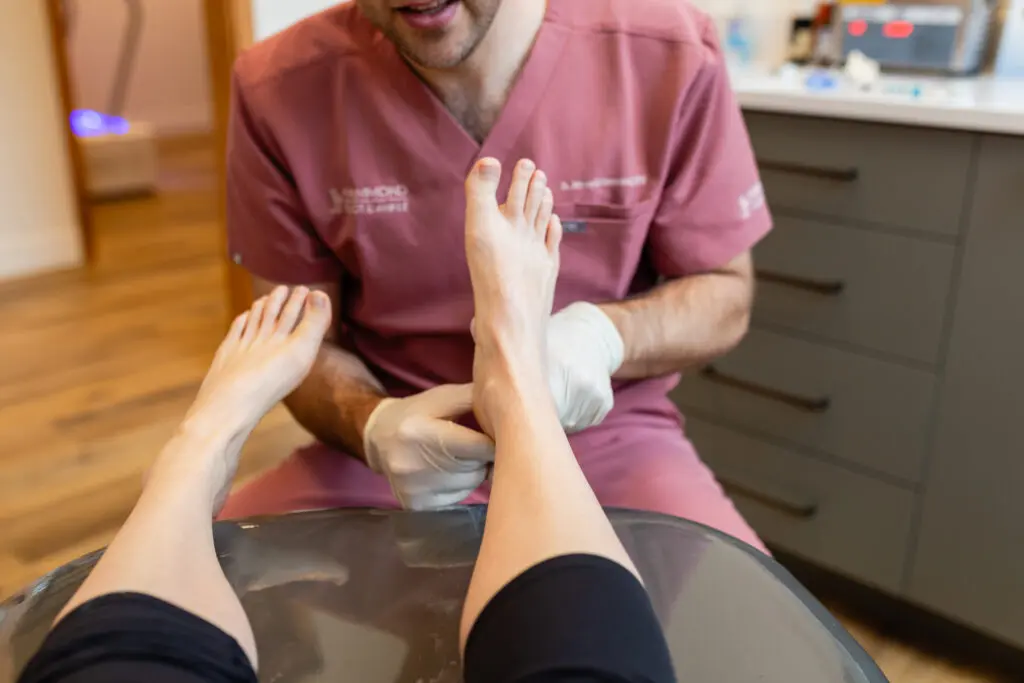
Inflammation and pain in your heel could be a sign of plantar fasciitis, but how do you live with this condition? Keep reading to discover how to cope and treat plantar fasciitis, even when it’s keeping you off your feet.
Your feet take a lot of stress and wear-and-tear daily, sometimes leading to painful conditions like plantar fasciitis. Foot conditions such as this often cause heel pain and discomfort, making it difficult to get up and get around.
However, living an everyday life is possible, even when you have plantar fasciitis. Simple lifestyle changes along with expert treatment are both great ways to manage plantar fasciitis while also being able to enjoy everyday activities.
Dr. Jeffrey Hammond and the Hammond Foot and Ankle team offer customized care for various foot and ankle conditions, including plantar fasciitis.
Dr. Hammond is an experienced podiatrist who offers conservative therapies and personalized treatments to help you deal with plantar fasciitis pain.
Understanding plantar fasciitis
The plantar fascia is a durable, thick piece of tissue that spans from the toes to the heel bone. Strong and stretchy, the plantar fascia forms the arch of your foot and connects the heel bone to other bones in the front of the foot.
Plantar fasciitis is a condition where the plantar fascia becomes inflamed from injury or overuse. The inflammation related to plantar fasciitis makes it hard to walk or do normal activities without pain.
Working in an environment where you’re on your feet all day or working out without stretching are risk factors for plantar fasciitis. However, you can also get plantar fasciitis from working out or standing on hard surfaces all day or by wearing shoes that don’t support the arch of your foot.
High arches, flat feet, and being overweight are medical risk factors for plantar fasciitis.

What are the symptoms?
The symptoms of plantar fasciitis vary, depending on the severity of the condition and how long you’ve been living with it. Heel pain is one of the most common [symptoms] related to the condition, along with the following signs:
- Pain around the arch of the foot
- Heel swelling
- Stiffness around the heel
- Tightness in the Achilles tendon
- More pain in the morning or after sitting for a long time
- Constant aching or dull ache in the foot or heel
You may also experience extreme pain with pressure on the heel or walking and putting weight on the back of your foot. Although physical activity sometimes relieves the pain, it’s usually short-lived.

The pain of plantar fasciitis typically comes back even after it seems to be better after moving around.
Home therapies for plantar fasciitis
Living with plantar fasciitis doesn’t need to be painful; you can do plenty of things to reduce pain and regain mobility. A few of the home therapies you can try to relieve discomfort in your feet include:
Stretching
[Stretching] helps relieve tension on the plantar fascia, which often causes pain and inflammation. You can also massage your foot to increase circulation and ease discomfort.
Rest
If your pain starts after physical activity, it’s a good idea to rest for at least a week to allow the plantar fascia to recover. However, too much rest can worsen discomfort, so don’t stay on the couch too long.
Ice
[Icing the affected foot] helps reduce inflammation and swelling. It also reduces discomfort in the heel and bottom of the foot related to plantar fasciitis.
Supportive shoes
Supportive shoes are one of the best ways to deal with plantar fasciitis. It’s a good idea to wear shoes with adequate arch support while avoiding walking barefoot or wearing flip-flops, which don’t support the feet.
Orthotics
Orthotics are customized shoe inserts that provide personalized support for your feet, which helps relieve the pain related to plantar fasciitis.
Immobilization
You may require a walking boot for a few weeks to allow the plantar fascia to heal correctly. Dr. Hammond advises you on how long you need to wear the boot, depending on the severity of your condition.

When to seek treatment
Heel pain that lasts for more than a week without relief is a sign that you should seek treatment. If you’ve tried home treatments without relief and aren’t able to do your everyday activities, Dr. Hammond and his team can help.
At your appointment, Dr. Hammond evaluates your foot and heel to determine if plantar fasciitis is the culprit behind your pain. He initially treats this condition conservatively, including [physical therapy] and over-the-counter medications.
However, if your pain persists, shockwave therapy, corticosteroid injections, or [percutaneous tenotomy] may be recommended for long-term pain relief.

Surgery is rarely necessary for plantar fasciitis but is sometimes required for severe cases where other treatments haven’t successfully provided permanent relief.
Typically, a mixture of conservative treatments and physical therapy are the best options for plantar fasciitis treatment.

If you’re tired of dealing with plantar fasciitis, call Hammond Foot and Ankle today to schedule a consultation with Dr. Hammond or request an appointment on the website.
Dec 15, 2023
